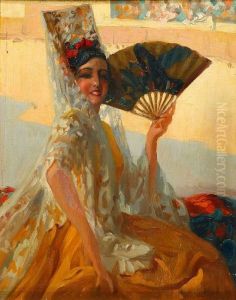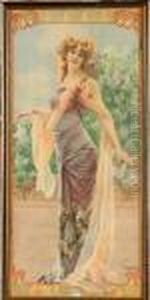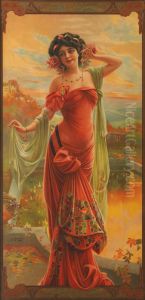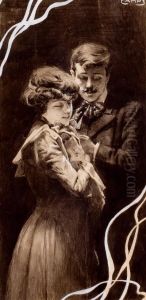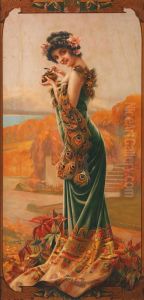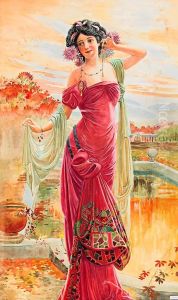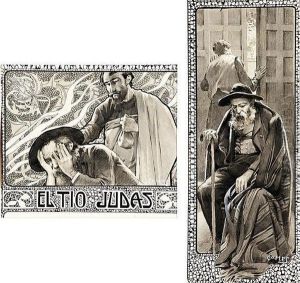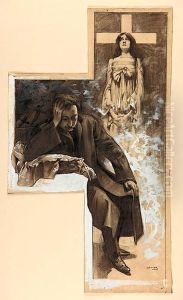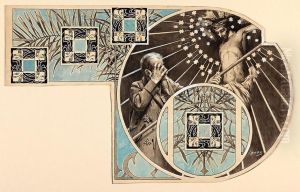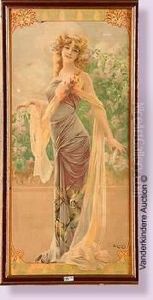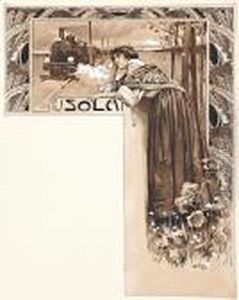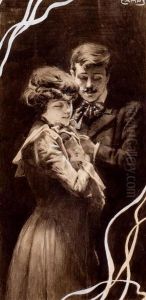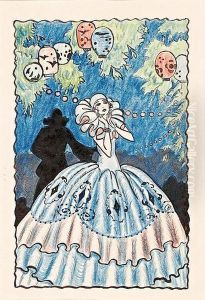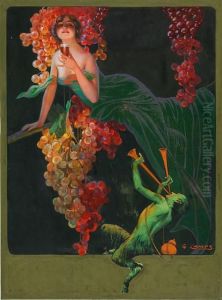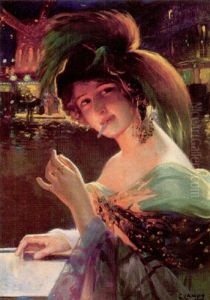Gaspar Camps Paintings
Gaspar Camps i Junyent was a renowned Catalan painter and illustrator, born in Igualada, Spain, in 1874. He is particularly noted for his contributions to the Art Nouveau movement, which was at its peak during the late 19th and early 20th centuries. Camps' work was characterized by its delicate lines, vibrant colors, and often, the incorporation of elements of fantasy and sensuality, making him a significant figure in the development of modernist visual arts in Catalonia and beyond.
Camps received his initial training in art at the Llotja School in Barcelona, where he was influenced by contemporary Catalan modernisme. He furthered his studies in Paris, a global hub for artists at the time, immersing himself in the city's avant-garde artistic community. Paris provided Camps with the exposure to the leading edges of Art Nouveau, influencing his style profoundly. He absorbed the fluid lines, natural forms, and emphasis on decoration that defined the movement, integrating these elements into his own unique vision.
Throughout his career, Gaspar Camps achieved considerable success as an illustrator, working for various magazines and publications. His illustrations often featured elegant figures, intricate patterns, and a strong sense of movement, capturing the essence of the belle époque era's aesthetics. Beyond illustration, Camps also excelled in poster art, creating memorable posters for events, advertisements, and theatrical productions, which are today celebrated for their artistic merit and historical relevance.
Despite his accomplishments, Gaspar Camps' work was somewhat overshadowed by more prominent contemporaries within the Art Nouveau movement, such as Alphonse Mucha. However, in recent years, there has been a resurgence of interest in his contributions to the art world, leading to a reevaluation of his place within the pantheon of modernist artists.
Camps' legacy is preserved through his captivating works, which continue to be exhibited in art galleries and museums around the world. He passed away in 1942, leaving behind a body of work that continues to inspire admiration and scholarly interest for its beauty and historical significance.
